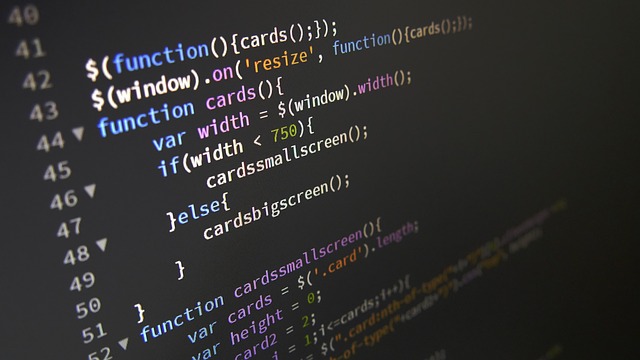JavaScript Error Handling Best Practices: A Complete Guide

Introduction
Error handling is a crucial aspect of JavaScript development, especially when building dynamic web applications. A well-handled error ensures that the user experience remains smooth, even when things go wrong. JavaScript offers several techniques for handling errors, from simple try-catch blocks to advanced error reporting systems.
In this guide, we’ll explore the best practices for JavaScript error handling. We will dive into common error types, explain how to use JavaScript’s built-in error handling mechanisms, and provide practical tips for ensuring your applications are robust and resilient to runtime issues.
Why Error Handling is Important in JavaScript
When building web applications or running server-side JavaScript (Node.js), developers will inevitably encounter errors, whether they’re bugs in the code, unexpected input, or network failures. Without proper error handling, the application might crash, display unhelpful error messages, or behave unpredictably, leading to poor user experiences.

By handling errors properly:
- User Experience (UX) improves: Users are less likely to encounter blank pages or unexpected app crashes.
- Debugging is easier: Proper error handling gives developers more insight into what went wrong.
- Code remains maintainable: With robust error handling, code becomes more resilient to edge cases and failures.
Common Types of JavaScript Errors
JavaScript errors fall into three main categories:
- Syntax Errors: These occur when the code is not written according to JavaScript’s syntax rules. For example:
In the code above, the missing semicolon causes a syntax error.
- Runtime Errors: These errors occur during the execution of the program, such as calling a method on an undefined variable:
- Logical Errors: These are harder to detect as the code runs without errors, but produces incorrect results due to flawed logic. For example:
JavaScript Error Handling Techniques
JavaScript provides several mechanisms for handling errors. Let’s look at the most common techniques:
1. Using try-catch Statements
The most common method for handling runtime errors is the try-catch statement. It allows you to attempt to execute some code (try) and catch any errors that occur, enabling you to handle them gracefully.
Basic Syntax:
In the example above:
- The
tryblock contains the code that might throw an error. - The
catchblock will handle the error if one is thrown during execution.
Best Practices for try-catch:
- Always catch specific error types: This makes debugging easier.
- Use the
finallyblock for cleanup: Thefinallyblock runs regardless of whether an error occurred, making it useful for closing files or network connections.
2. Throwing Errors with throw
You can use the throw statement to create custom errors. This is helpful when validating inputs or when you want to raise an error in certain conditions.
By throwing errors, you can ensure that invalid data is caught early in the program’s flow.
3. Using async-await with try-catch for Asynchronous Code
When working with asynchronous JavaScript (like with promises), handling errors can be tricky. The introduction of async/await allows you to write asynchronous code in a synchronous style, and combining this with try-catch ensures that errors are handled gracefully.
Example:
4. Using Promise.catch() for Error Handling in Promises
When dealing with promises, catch() can be used to handle any errors that occur during the promise resolution.
This method is useful for handling errors in asynchronous code without the need for async-await.
5. Custom Error Types
To provide more detailed error information, you can create custom error classes. This is especially helpful when working on large-scale applications where different error types may need specialized handling.
6. Using console.error() for Logging Errors
A key part of handling errors is making sure that developers can debug and understand the issues. console.error() is a powerful way to log errors, including their stack traces, to the browser’s console.
Logging the stack trace helps developers pinpoint where the error occurred in the code.
7. Global Error Handling in JavaScript
For catching unhandled errors globally, the window.onerror function can be used in the browser environment, or process.on('uncaughtException') in Node.js.
8. Handling Errors in User Input
Always validate user input before processing it. Use try-catch to handle cases where the input is unexpected or harmful.
Best Practices for JavaScript Error Handling
To ensure your application is robust and user-friendly, follow these best practices for error handling in JavaScript:
| Best Practice | Description |
|---|---|
| Use Specific Error Types | Catch specific error types (e.g., TypeError, SyntaxError) for better debugging. |
Don’t Overuse try-catch |
Only use try-catch when absolutely necessary to avoid performance issues. |
| Log Detailed Error Information | Always log the error message and stack trace for easier debugging. |
| Provide User-Friendly Error Messages | Avoid exposing technical details to the end-user; provide simple, actionable messages. |
| Use Custom Error Classes | Create custom error types to handle different kinds of errors in your application. |
| Avoid Silent Failures | Never silently ignore errors; always log or handle them in some way. |
| Handle Asynchronous Errors Properly | Use try-catch with async-await or .catch() with promises for async errors. |
Use finally for Cleanup |
Ensure resources are released, like closing files or network connections, in a finally block. |
| Graceful Degradation | When an error occurs, degrade the application’s functionality without crashing it. |
FAQs About JavaScript Error Handling
1. What are the different types of errors in JavaScript?
There are three primary types of errors in JavaScript:
- Syntax Errors: Issues with code structure, such as missing parentheses or brackets.
- Runtime Errors: Occur during the execution of the program, e.g., calling methods on undefined variables.
- Logical Errors: Errors that don’t throw exceptions but result in incorrect behavior or results.
2. How do I handle errors in asynchronous JavaScript?
For asynchronous JavaScript, use try-catch with async-await for handling errors in promises or use .catch() with promise chains.
3. Is it a good practice to use try-catch blocks frequently?
No, it’s important to use try-catch only when necessary, as it can add overhead and impact performance if used excessively in your code.
4. How do I create custom error classes in JavaScript?
You can create custom error classes by extending the built-in Error class. This allows you to add custom properties and methods, providing better error management.
5. What should I do when an error occurs in JavaScript?
When an error occurs, log it for debugging purposes, provide a user-friendly error message, and consider providing fallback behavior or graceful degradation of functionality.
6. How do I handle global errors in JavaScript?
Use window.onerror in the browser to catch unhandled errors or process.on('uncaughtException') in Node.js to handle global errors.
7. Should I expose error details to the user?
No, avoid exposing sensitive error details like stack traces to users. Instead, provide friendly, understandable messages and log the technical details for developers.
Conclusion
Effective JavaScript error handling is a vital skill for developers, ensuring that applications are resilient, user-friendly, and easier to maintain. By leveraging JavaScript’s built-in error handling mechanisms, following best practices, and using proper techniques like try-catch, throw, and custom error classes, developers can handle errors gracefully and maintain a smooth user experience.
With the right approach to error handling, your applications will be more robust and easier to debug, leading to fewer bugs and a better overall user experience. Always remember to log errors, provide helpful messages, and never leave your users in the dark when something goes wrong!
